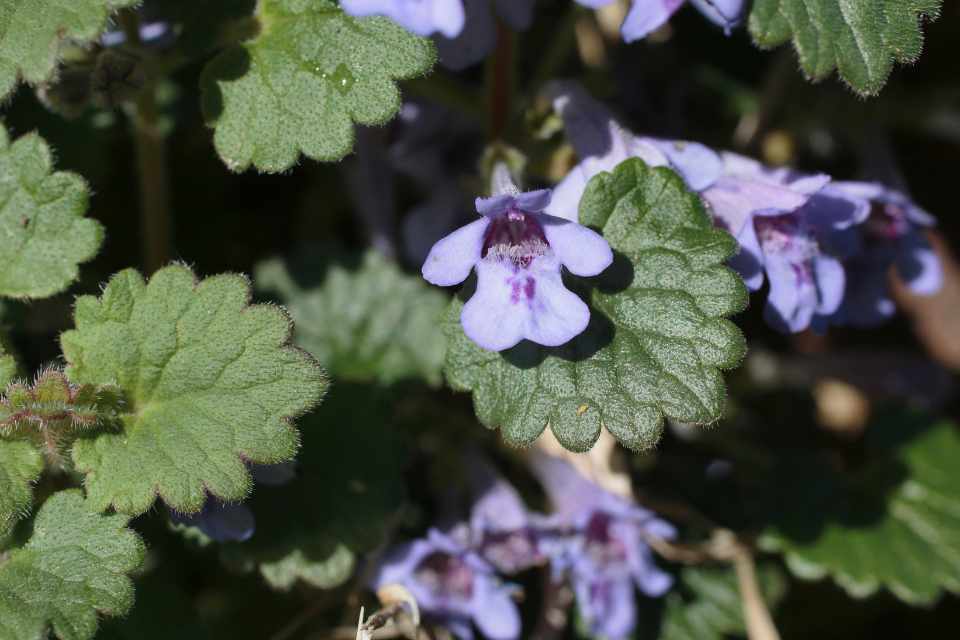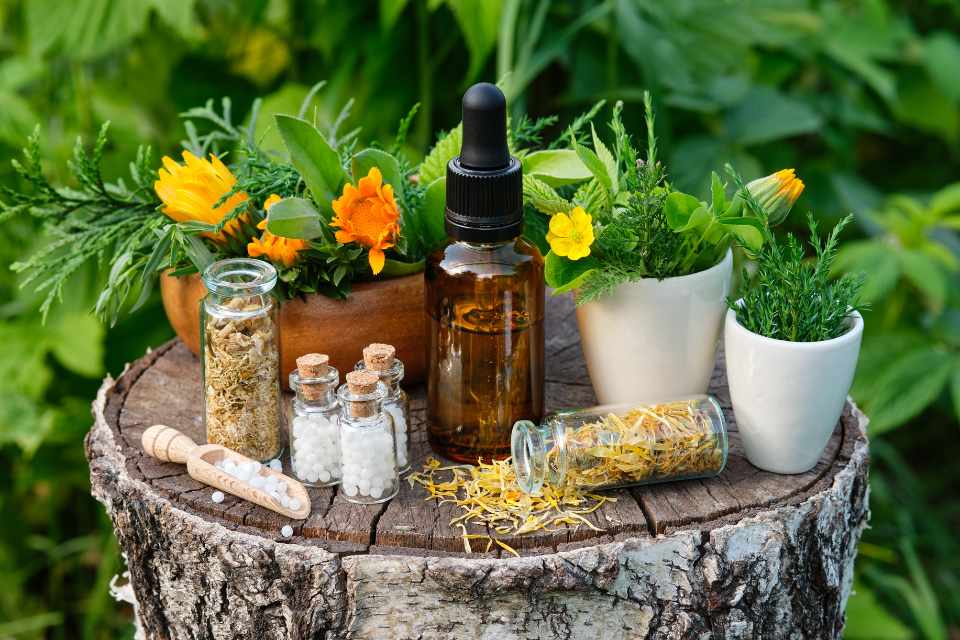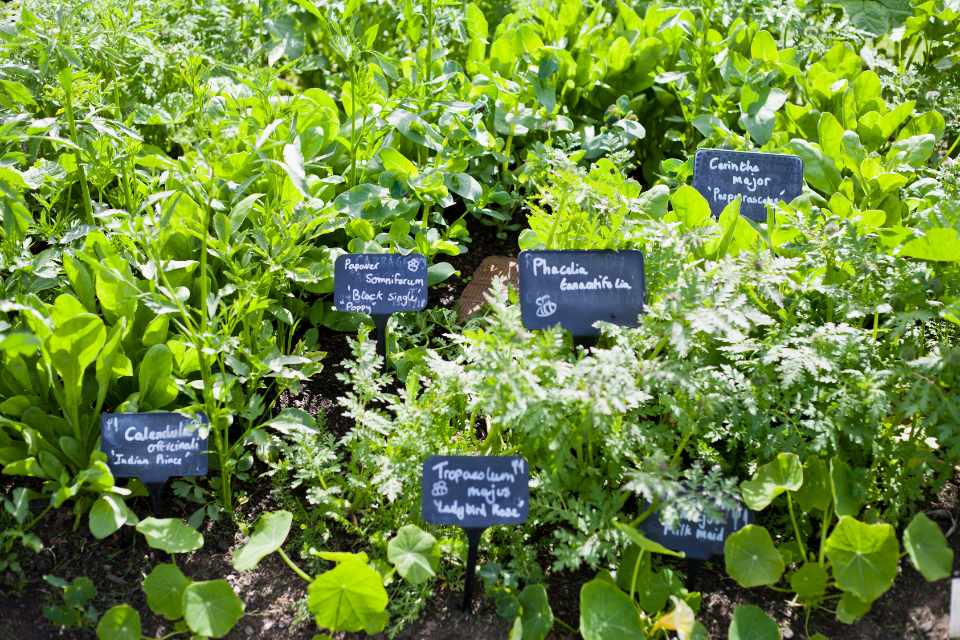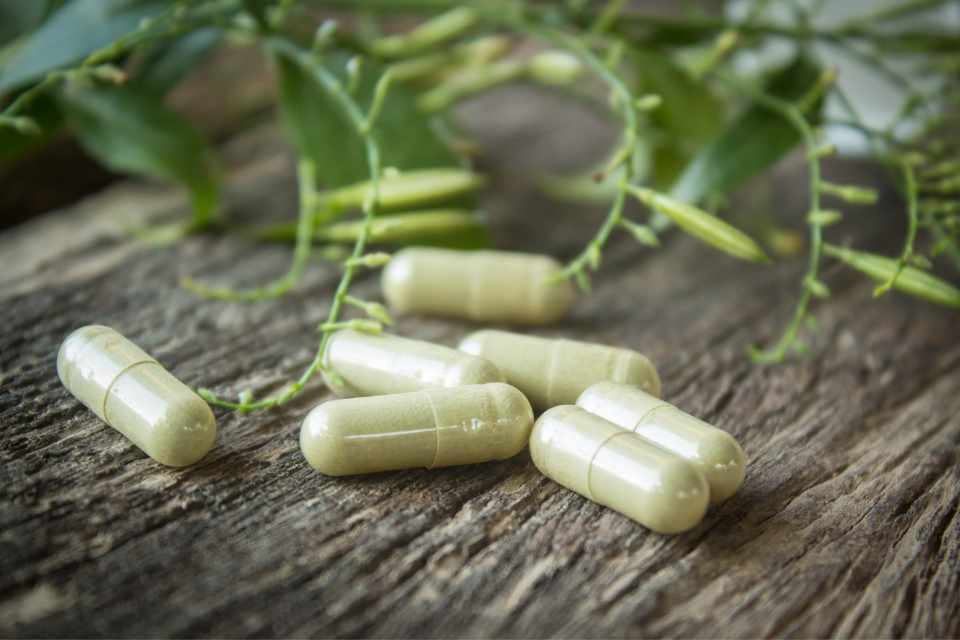Glechoma hederacea L. — Ground Ivy
Glechoma hederacea is a medicinal herb otherwise known as ground ivy. It is a lovely sight in the spring as it is one of the first plants to flower.
This evergreen, aromatic, creeping, perennial herb grows throughout the British Isles. It also grows in other parts of Europe, Asia, New Zealand and the United States. You will find this common plant in damp, heavy soil and places with light shade, such as woods and under hedgerows, but also in unshaded conditions, such as roadsides or wasteland.
A variegated variety, Glechoma hederacea Variegata, also makes an attractive garden plant for trailing over the sides of tubs and hanging baskets. Some people also use it for garden ground cover, but its ability to spread quickly and form large patches means it can become an invasive weed.
Ground ivy is not an ivy at all. The name Glechoma comes from the Greek word glechon, meaning mint-like plant. That’s right; ground ivy is in the mint family. It has the square stems of the mints, with dark green leaves and funnel-shaped blue-violet flowers that emerge from the leaf axils. It also has a strong minty scent and a mildly bitter flavour. The flowers are more bitter than the leaves. Hence, the reason to include the flowers in the remedy.
Over the years, ground ivy has had other names, such as Gill-over-the-ground and Creeping Charlie, reflecting its creeping, spreading, carpeting nature. Other names include Field Balm, Cat’s foot and Alehoof, where ‘hoof’ meaning herb, indicates its use as a bitter ingredient for ale production.
Does ground ivy have health benefits?
Ground ivy has been a part of traditional medicine for hundreds of years, and today’s scientific methods support its use in folk medicine. It is packed with a good quantity of nutrients, having high amounts of minerals, including magnesium, manganese, calcium, zinc and potassium. It is also a rich source of B vitamins and vitamins C, E and K. The leaves are high in the antioxidants quercetin, rutin and caffeic acid. In fact, a hot water extract of ground ivy has more antioxidant capacity than vitamin C.
Ground ivy is a cool and dry remedy. Its cooling and drying nature balances out hot and damp conditions such as inflammation and infections.
The Romans used it as a remedy for respiratory conditions. Its anti-inflammatory, antibacterial, antiviral, astringent and expectorant properties explain its historical use for infections such as sore throat, colds, flu, earache, tinnitus, catarrh, sinusitis and bronchitis. Its anti-histamine and anti-allergy properties explain its use in asthma and hayfever.
This cooling, anti-inflammatory property also extends to the urinary and digestive systems. Today, herbalists still use ground ivy as a bitter tonic and digestive aid, especially for poor appetite, and it is perfect for those who suffer from indigestion or heartburn. In addition, its diuretic property supports its tradition of use as a tonic for the kidneys and bladder.
More recently, scientists have looked at the use of ground ivy or its constituents as an anticancer agent as a liver protector for increasing bile secretion and an agent for dissolving gallstones.
As a detoxifying herb, it supports the body’s natural detox pathways via the excretion of waste and toxins through the liver and kidneys. Specifically, herbalists have found it may aid in eliminating heavy metals such as lead and mercury.
Ground ivy is also a traditional wound healer in the form of an ointment or salve. If you want to try it, here is a recipe for a homemade salve.
How to make ground ivy salve
Use clean and sterilised equipment. Fill a clean jar with dried ground ivy leaves and flowers and cover it with an oil such as sunflower oil or olive oil. I like to use a yoghurt maker to keep the oil/herb mixture warm while it extracts the constituents.
After 24 hours, strain the oil through a fine mesh such as a nut milk bag. Dispose of the used ground ivy on the compost heap. Then, place the oil in a clean bowl over gently simmering water. Add some grated beeswax and let it melt in the warm oil. Experiment with the quantities here.
Use a small spoon to scoop some oil out and see if it starts to solidify on the spoon as it cools. I like to make a reasonably soft salve for ease of application to wounds.
How to use Glechoma hederacea
As with all plants, the constituents vary with the growing conditions and harvesting time. The best time to collect the leaves and flowers is between April and June. You can make ground ivy tea from fresh or dried herbs. Unless you learn to identify the plant, you will only have access to the dried remedy. Look online or buy it through a herbalist.
Research shows that simple herbal tea is the best way to extract the medicinal compounds. However, ground ivy tincture is a convenient alternative to the infusion.
How to make ground ivy tea
You can make herbal tea the same way you would make any tea. Use a cup with a lid or teapot to prevent the volatile oils from escaping. Add water that has come to a boil to fresh or dried leaves and flowers. Steep the tea for 5 to 10 minutes, then strain. You can add honey to taste.
Ground ivy tea is safe for most people in the amounts generally found in foods. But pregnant and breastfeeding women should probably avoid drinking ground ivy tea and use Plantago lanceolata (Ribwort) instead. If you take prescription medication, it is always best to ask a medical herbalist for advice before using herbal remedies.
Using Glechoma hederacea in recipes
As you might expect from a plant of the mint family, it has a slightly bitter, minty aromatic flavour. So, it can substitute in recipes for culinary herbs such as peppermint, rosemary or thyme.
Some ways to include ground ivy in your meals:
- You can add ground ivy in place of other herbs in your salad dressings or dips.
- Use it in small amounts as a garnish in soup or stews or sprinkled over roasted vegetables.
- Stir it through mashed potatoes or potato salad
In conclusion, ground ivy may not be suitable for everyone, but it deserves more attention. It is easy to grow or find in the UK and is a versatile remedy.
FAQ
Is Glechoma hederacea an edible plant? Yes, but it is not recommended during pregnancy and lactation.
Is Glechoma hederacea a weed? Yes, it can be an invasive plant in the garden.








0 Comments